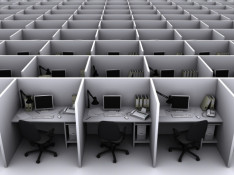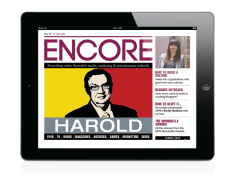How to build a culture
 How important is a company’s culture and how do you ensure you are breeding a good one? Matt Smith investigates, in a piece that first appeared in Encore.
How important is a company’s culture and how do you ensure you are breeding a good one? Matt Smith investigates, in a piece that first appeared in Encore.
When production companies Cordell Jigsaw and Zapruder’s Other Films merged early last year, bringing the staff together within the walls of the Zapruder building proved to be something of a challenge. While the two companies weren’t strangers to each other due to six months of talks and negotiations, working together on a full-time basis was a different story.
The merger made sense to founder Nick Murray on a few levels. Together as Cordell Jigsaw Zapruder (CJZ) the companies were stronger, but they also had a similar workplace culture which would make the transition easier.
He says: “A good culture for both of us was the emphasis the company puts on its creative output. You can’t make television programs for the sake of turnover, the team has to feel a strong connection to the product. If they don’t, the public will figure it out pretty quickly.”
Murray felt the only thing standing in the way of the ideal culture to foster this sort of output was the office walls. He quickly had the building remodelled. “Pulling the internal walls down was a big change to the building but we’re really happy with the work environment it’s set up,” he says.
“We’re now very open plan, with lots of meeting space and breakout areas. While everyone is working on different shows, it isn’t as compartmentalised as it used to be. It makes the workplace fluid, if needed, and people can work across genres on things that excite them.”
Another company that is about to go through similar physical changes to CJZ is Radio National at the Ultimo ABC headquarters in Sydney. Renovations will see station staff moved from their offices to an open plan setup merging two floors into one. However the response from staff is less enthusiastic, particularly for those who have been with the broadcaster for a long time and see the change as part of the ABC culture, and not in a good way. One ABC veteran told Encore: “There’s an awful lot of ABC and the rules have changed a lot. To stick around you have to get yourself to the stage where you’re really efficient. I have new programs every week, year in year out, even when I’m away or on leave. I’m saving them a fucking fortune, even if you factor in the occasional economy overseas trip.”
In the process of exploring this topic, Encore has spoken to a number of employees from various sectors of the industry who wish to remain anonymous as they describe strained and negative cultures. From autocratic workplaces run by fear where people are in danger of losing their jobs, to workplaces where those in charge walk around like gods – the cultures within the industry isn’t always described as good.
No doubt there are examples like this from every industry, but there’s an extra element of volatility working in an environment with so many creatives. Long hours and tough competition can have a serious effect on culture, and mergers like that of CJZ need to be managed carefully.
Duncan Campbell, the national content director at Australian Radio Network, has been through his share of mergers. He points to the Triple M stations being folded into the Austereo Network in 1992 as a successful move, despite being on the ‘losing team’.
“I was with Triple M, and ended up losing my position as content manager during the takeover,” says Campbell. “It was the smaller company with less experience, and the only way it would have held together was with Austereo calling all the shots. You can’t hold a culture together and be on the same footing, it doesn’t work.”
ON-AIR CULTURE
Campbell says overall, radio culture these days is driven by leanness and has become more performance-based over time. The regular six-weekly ratings also play a role in the culture.
“For the most part radio is fairly relaxed, fun and youthful. It’s less rigid than you might think,” says Campbell. “Unfortunately, though, there isn’t much job security. You can only last for as long as your ratings do.”
Campbell says ratings day can be tense and there is the danger of a culture based on fear developing if the results are not good. “When the ratings are good, everyone is happy. But there’s tension every time they’re delivered. People start looking for trends, and you just better hope yours is a good one.”
A MULTI-CULTURAL CULTURE
Fostering a healthy workplace culture is still a priority for large corporations, despite the fragmentation of the media landscape says Michael Ebeid, SBS CEO and managing director.
“I’m passionate about culture, if it isn’t nurtured properly it can make or break a company,” he says. “Creative media industries are always under a high amount of pressure, and SBS isn’t immune to this.”
When Ebeid joined SBS in 2011, one of his first actions was to form a culture team who would build a united vision. “Each business had its own culture. We worked hard to roll out a set of standards across television, radio, online, and everything else. We’ve promoted a positive culture by encouraging collaborations across divisions and celebrating achievements. The results have been outstanding.”
The SBS culture team has a member from each business, who is regularly replaced, to keep the perspectives fresh. “I see myself as the person who has lead the change in culture, but I couldn’t have done it without the support of that team in place,” says Ebeid.
He acknowledges that while ethnic diversity is one of SBS’s biggest assets, it can be a challenge. Ebeid says: “Walking through SBS offices is sometimes like walking through the United Nations. Everyone comes to work with their own nationalistic cultures, but corporately I’ve been very clear about the culture we wanted to build – a place where we work together and can celebrate achievement. Everyone needed to get on board, embrace it, or get left behind.”
While large organisations have the luxury of being able to appoint a chief culture officer to take charge of morale, CJZ’s Nick Murray says it’s not necessary across the board. “A culture officer sounds appropriately cultish. It’s all a bit of a cop out for having a knob at the top who can’t manage people. Does the culture officer make yogurt?”
CULTURE ARCHITECTS
Annick Perrin, managing director of Initiative, also doesn’t believe in these kind of roles. “The main influence of workplace culture, for any business, comes from the leadership team,” she says. “No matter how many people there are at the top, they need to show a united front. If they don’t, it will all just fall apart. When the trust breaks down everyone in the agency will feel it. I’ve seen this happen before, and it’s a sad thing to see.”
In her previous position at Ikon Communications, Perrin was seen as one of the key members of staff who helped build the company’s highly regarded culture. Their efforts won them the 2012 Mumbrella Award for Culture. In 2013, the trophy went to another media agency, OMD.
“I make it a point to meet with everyone in the agency at least twice a year and talk one on one for an hour,” says Perrin. “Talk about them, their life, what they’re doing, and where they hope to be.”
“The leadership team works hard to help set goals and aspirations, and work with the person to help them get where they want to be. It’s about open and constant communication.”
It’s a similar approach followed by Jason Burrows, founder of production company Jungleboys. “I’ve never thought about workplace culture a great deal,” he says. “If you have a place where people want to go to work, and want to hang out when they aren’t at work, I guess you’re doing something right.”
“The two most important things are keeping clients happy and staff happy,” says Burrows. Jungleboys has a good reputation for this that has even helped to attract business in the past.
“I do tend to go for people who are down to earth, and can admit when they’ve made a mistake. I give people a lot of responsibility and don’t micromanage. This makes my job easier as well,” Burrows adds.
THE BIG CULTURAL ISSUES
Company culture is plagued by a number of potential issues including competition, work/life balance, performance, sexism and racism to name a few. These pressures can have a serious effect on the health of a company, and while steps are being taken by various industry bodies to address the concerns on this list, one issue that continues to cause headaches for the industry is gender equality.
A recent survey by the gender diversity working group at the Communications Council found that women in the industry are at a disadvantage. The survey found 74 per cent of women in the industry feel they have been treated differently in the workplace because of their gender.
“The results from our survey were quite stunning,” says Lorraine Jokovic, CEO of advertising agency LOUD and spokeswoman for the working group. “They speak to the fact that culturally, from an industry point of view, we lag well behind the Australian corporate standards. This needs to be addressed, as the companies we’re servicing are meeting the same standards.”
“The industry has an old viewpoint driven by the senior management and it’s at odds with the younger viewpoint. Gender diversity hasn’t happened at the board level, and it needs to be driven as part of policy and agenda.”
Jokovic says further research being undertaken by the Communications Council indicates cultures within the industry are experiencing issues that extend beyond gender. “Ultimately the hallmark of a good culture is that it is driven by good leaders,” she says.
“They need to set the agenda. We are an industry known for its enthusiasm, knowledge and fun. These are the traits that need to be key parts of our culture as well.”
 This story first appeared in the weekly edition of Encore available for iPad and Android tablets. Visit encore.com.au for a preview of the app or click below to download.
This story first appeared in the weekly edition of Encore available for iPad and Android tablets. Visit encore.com.au for a preview of the app or click below to download.



